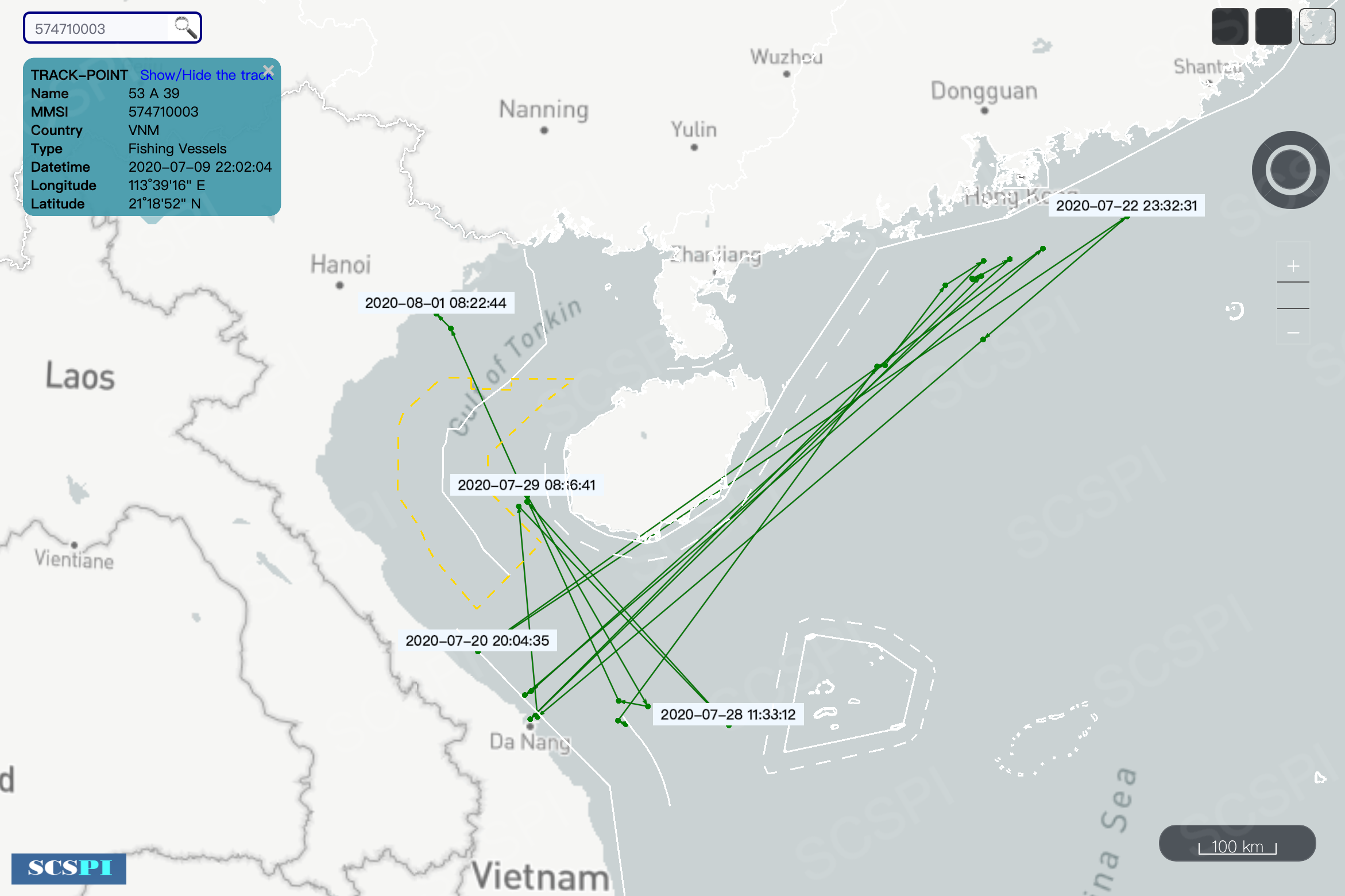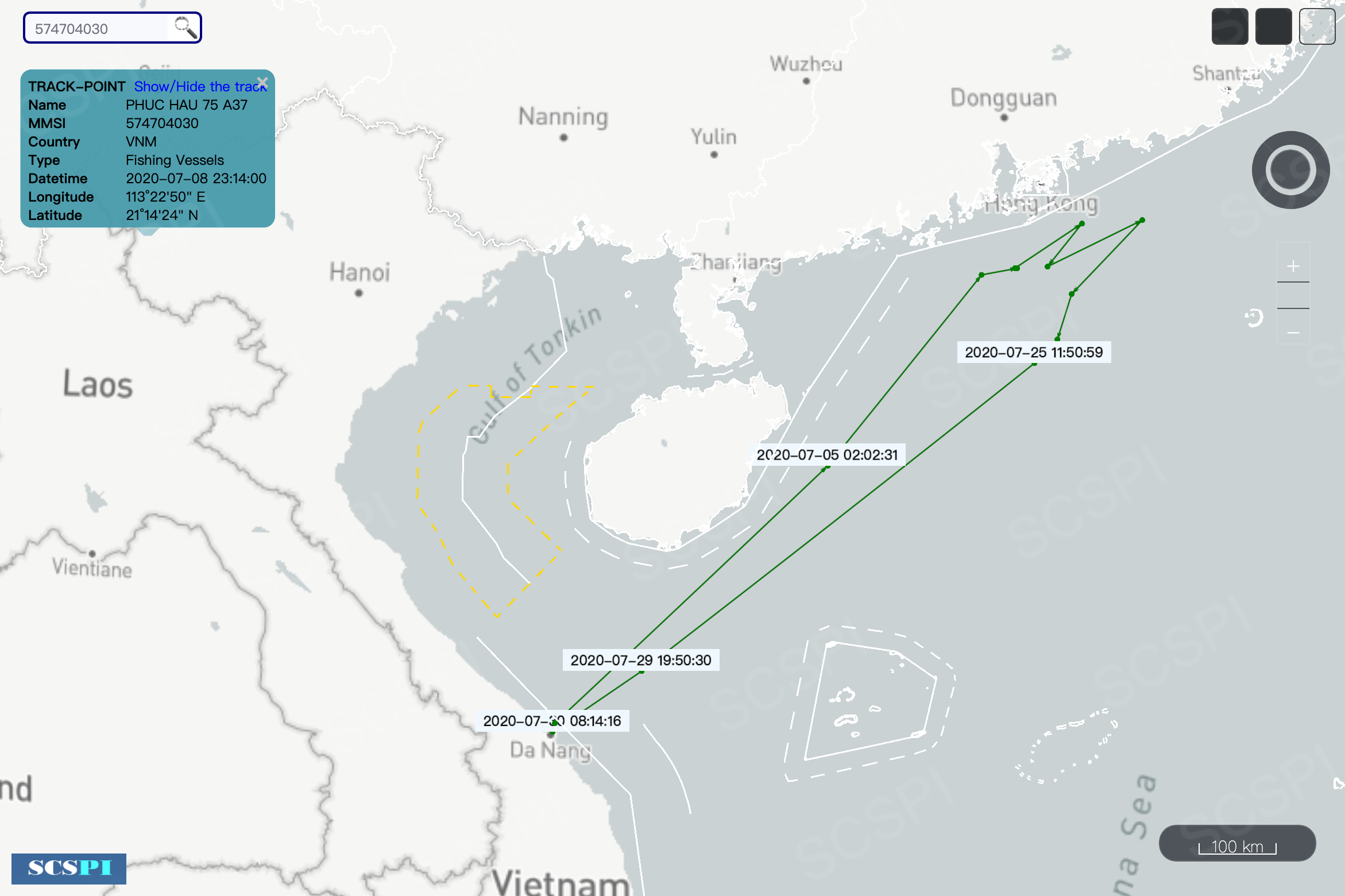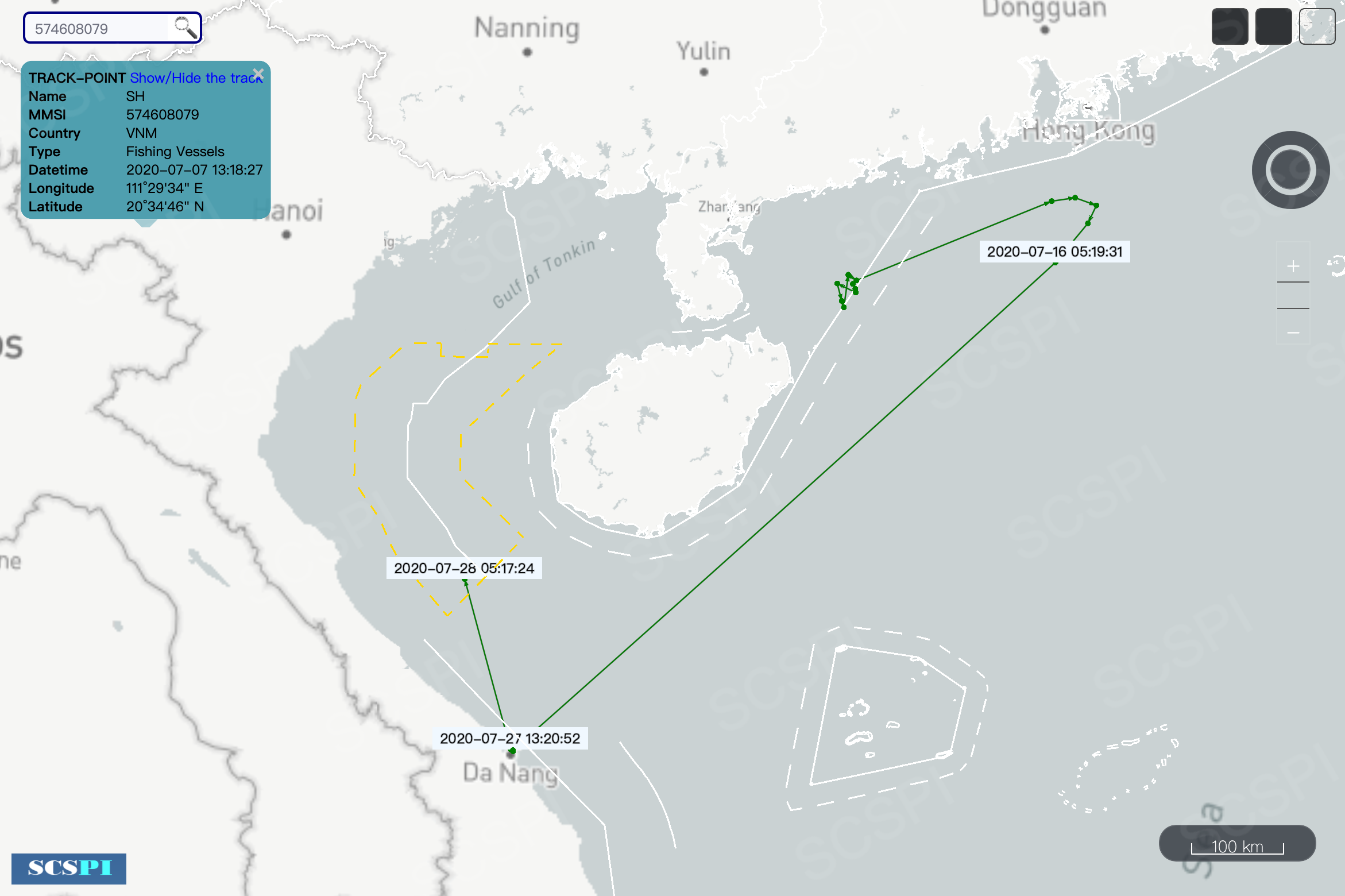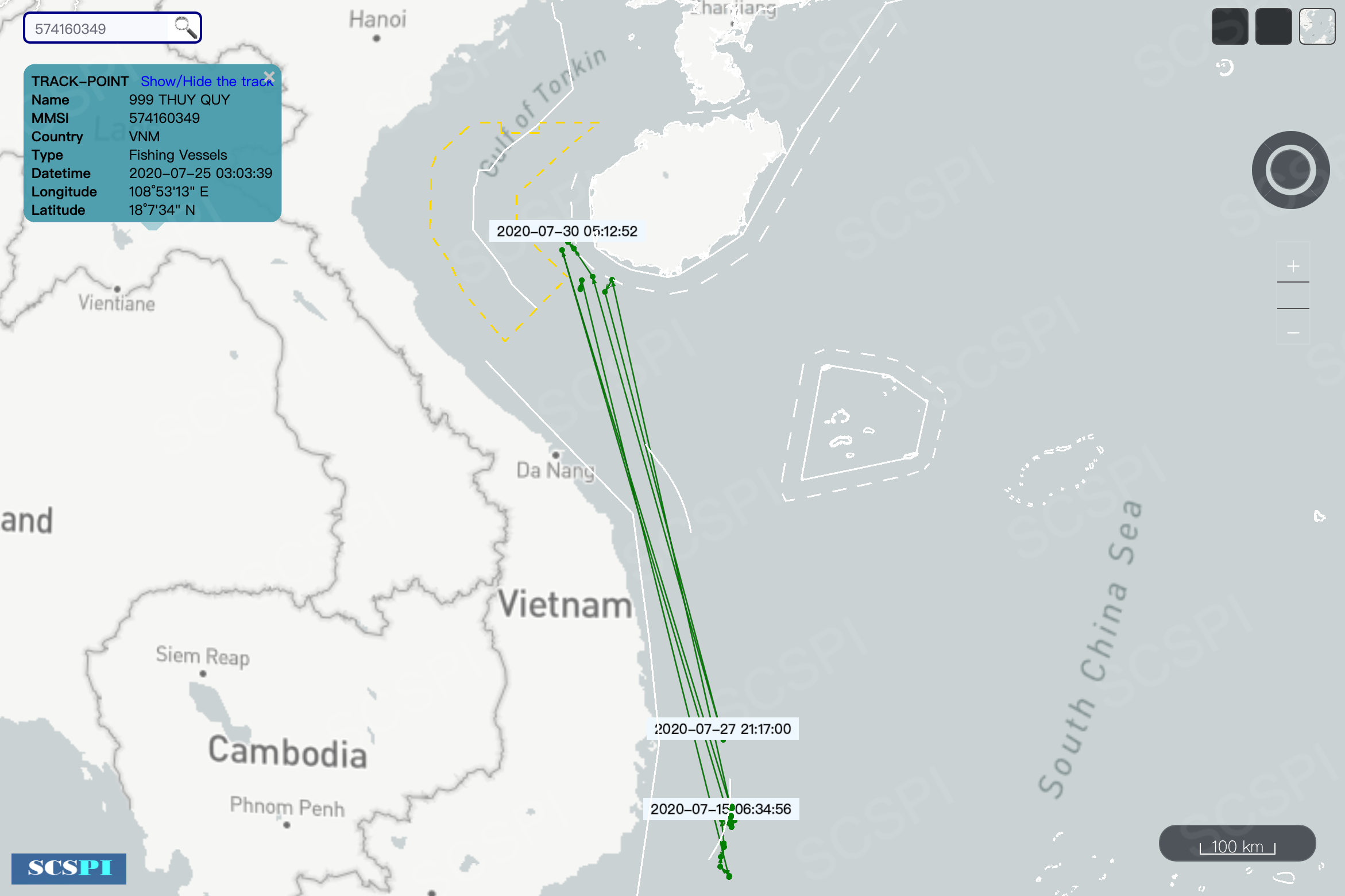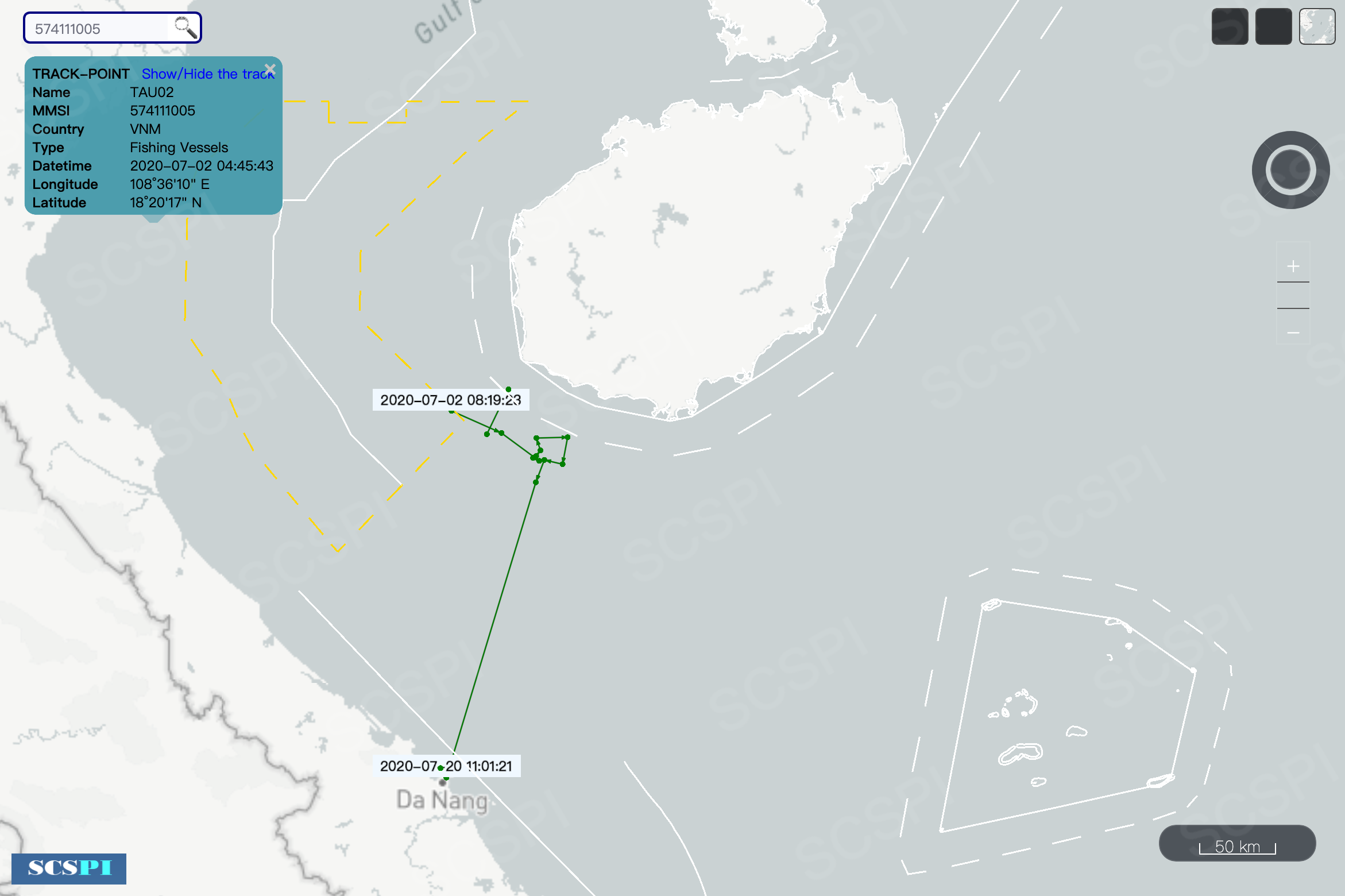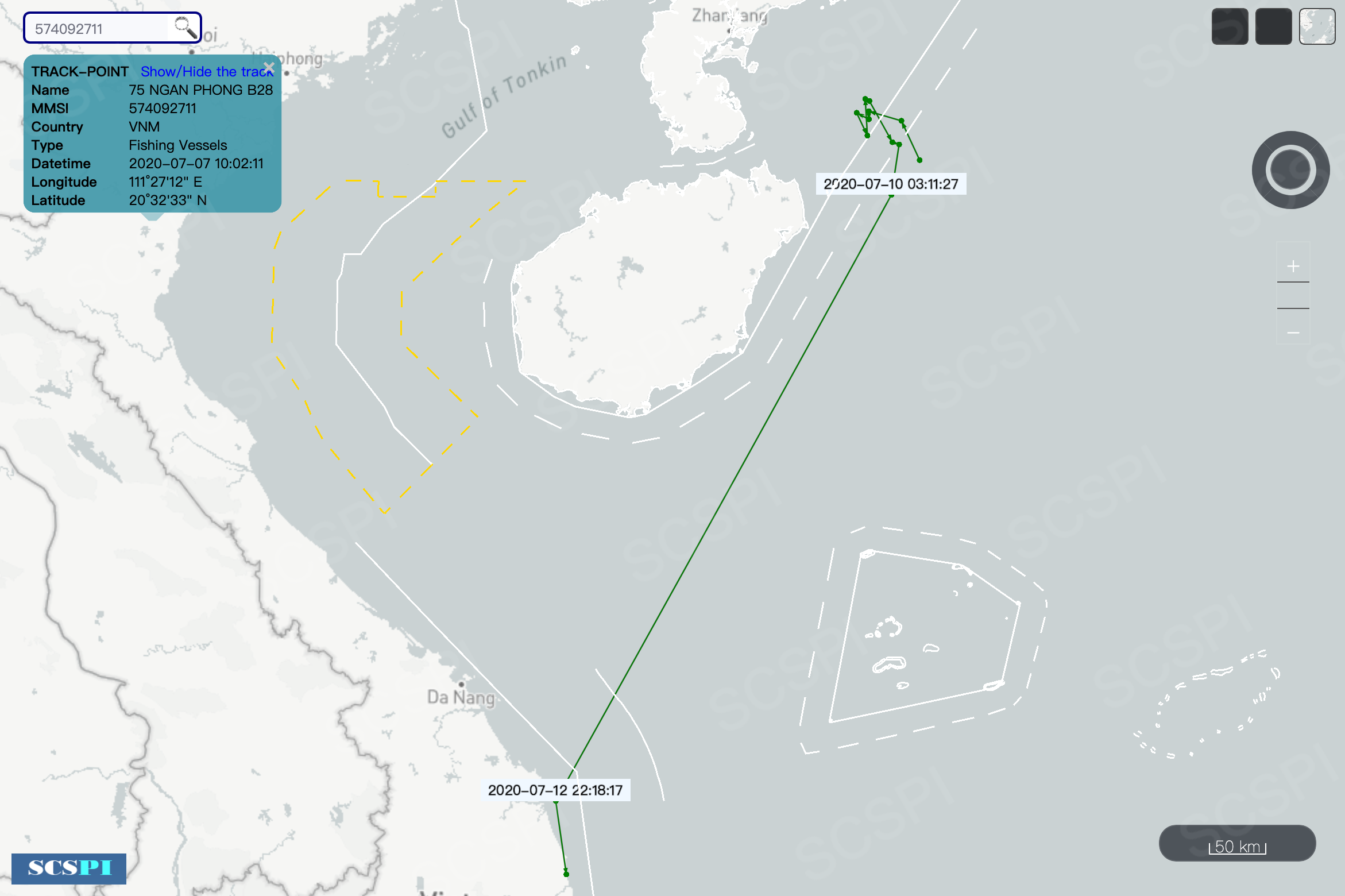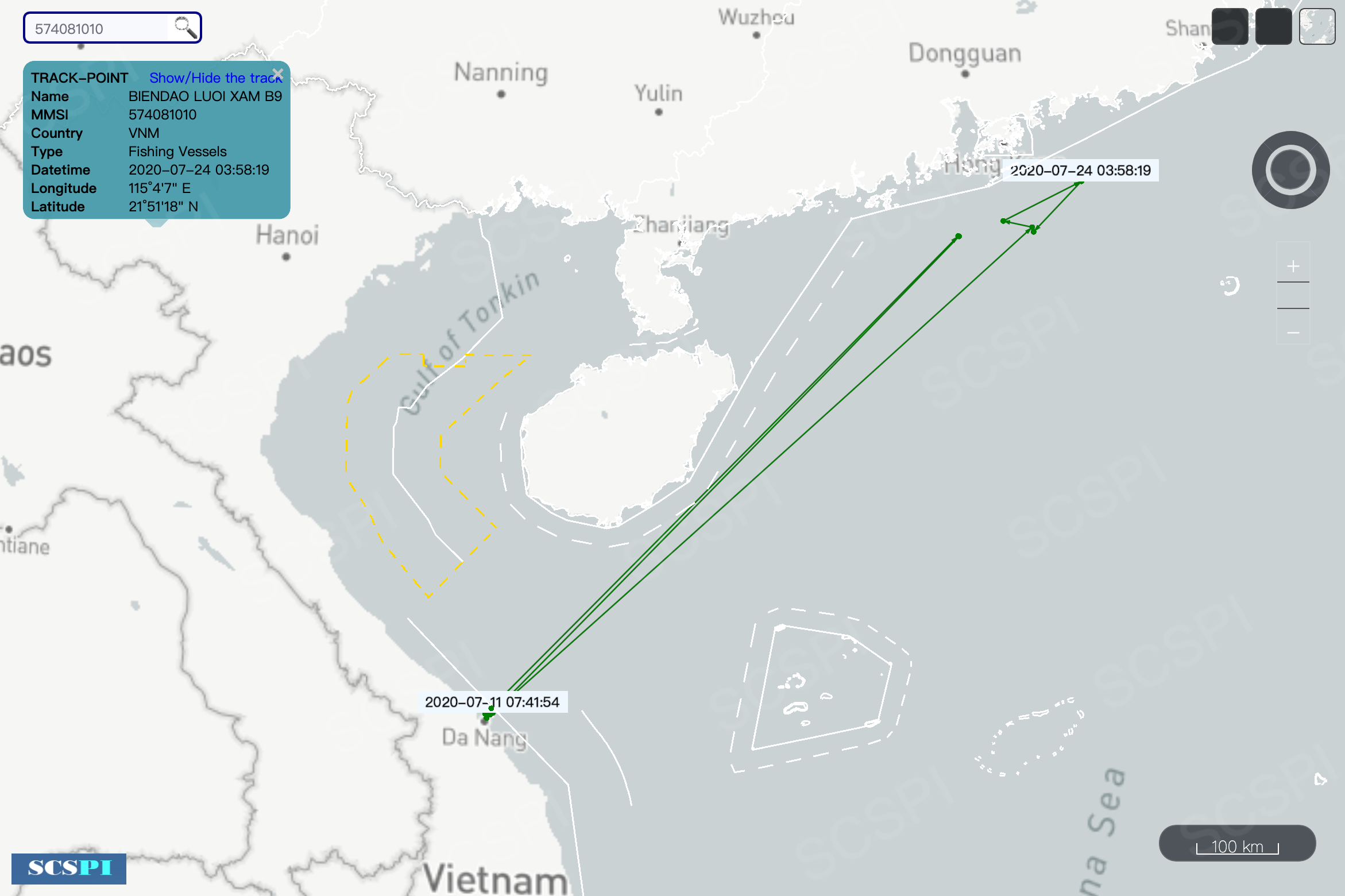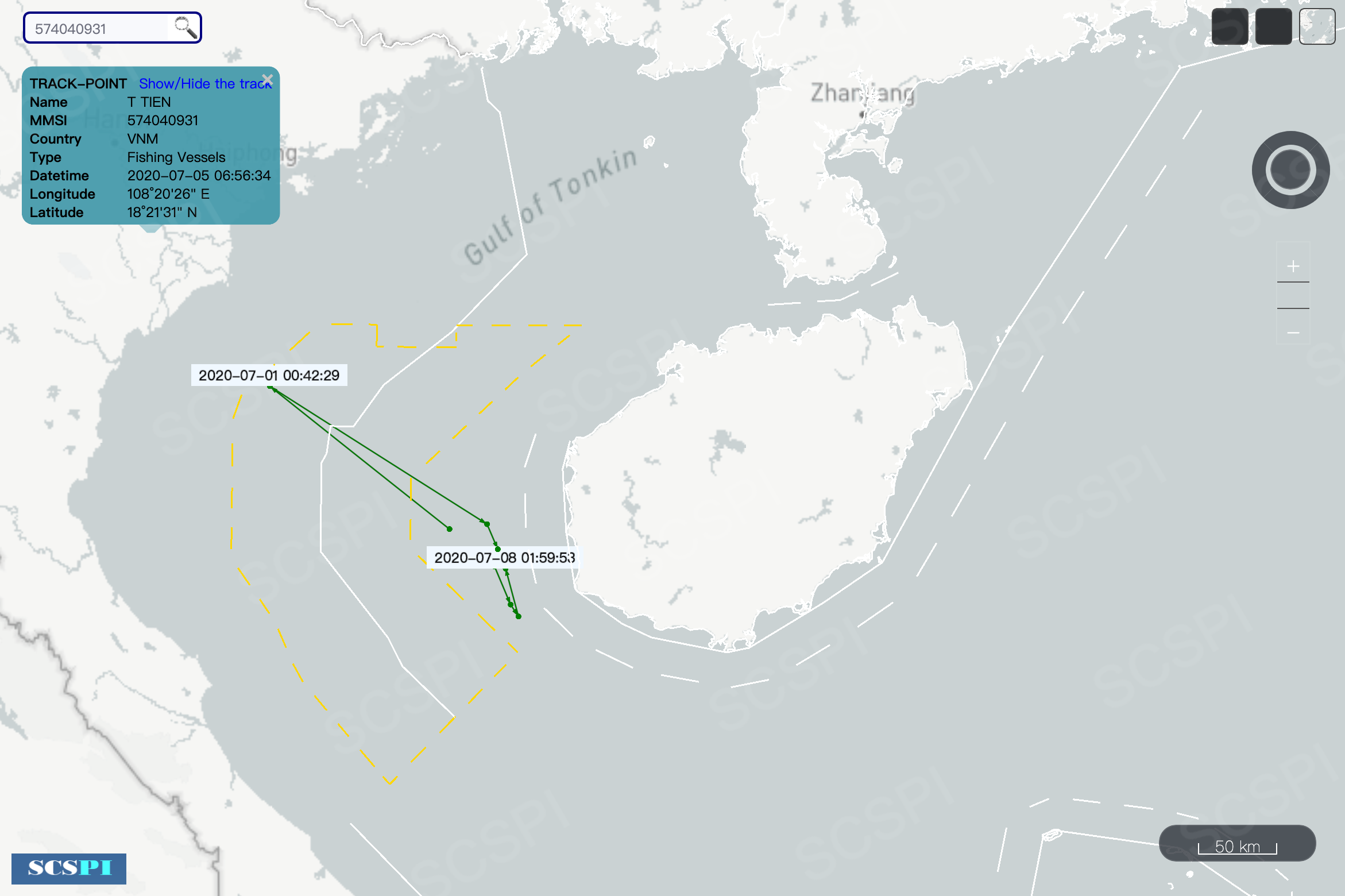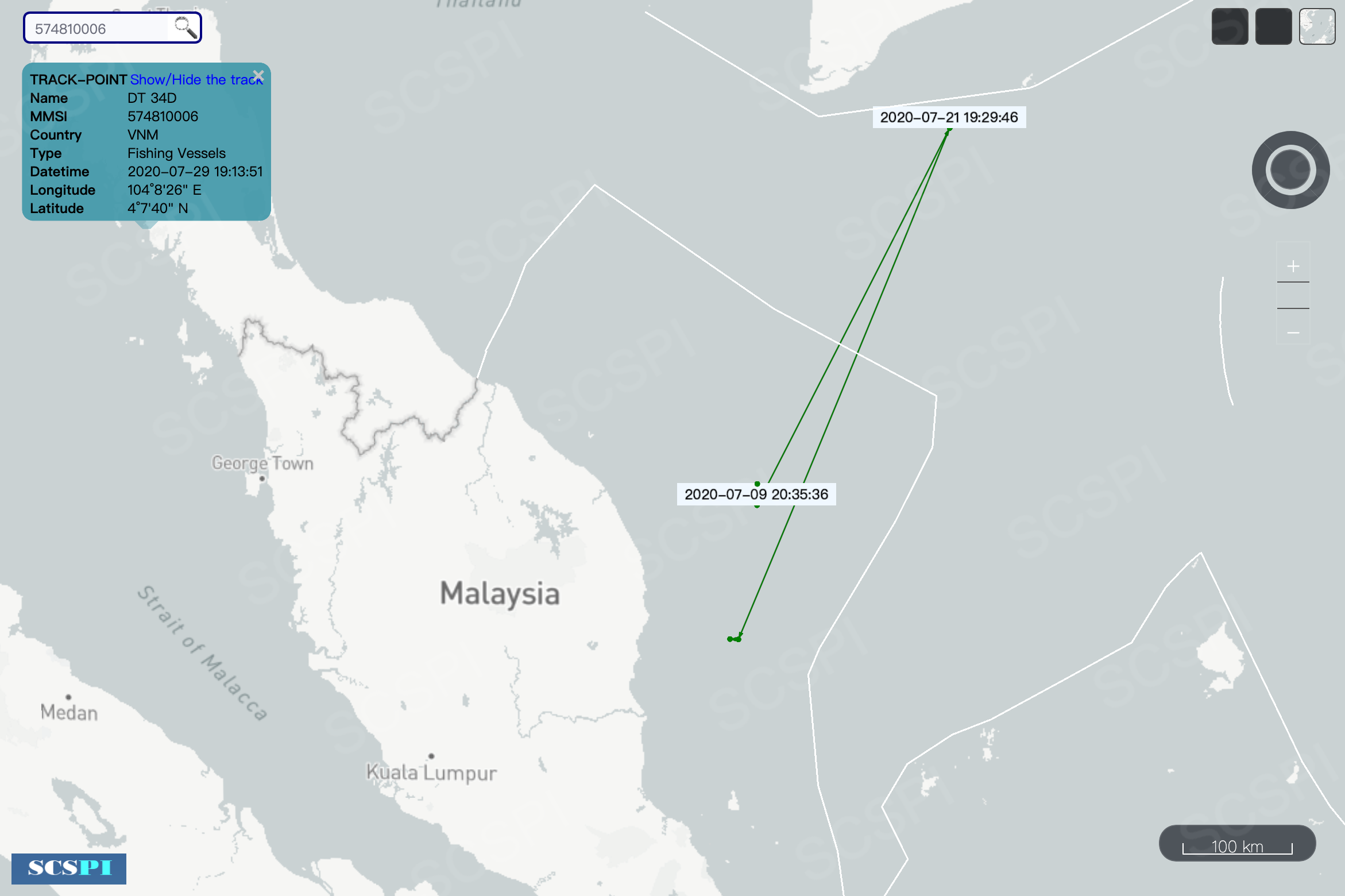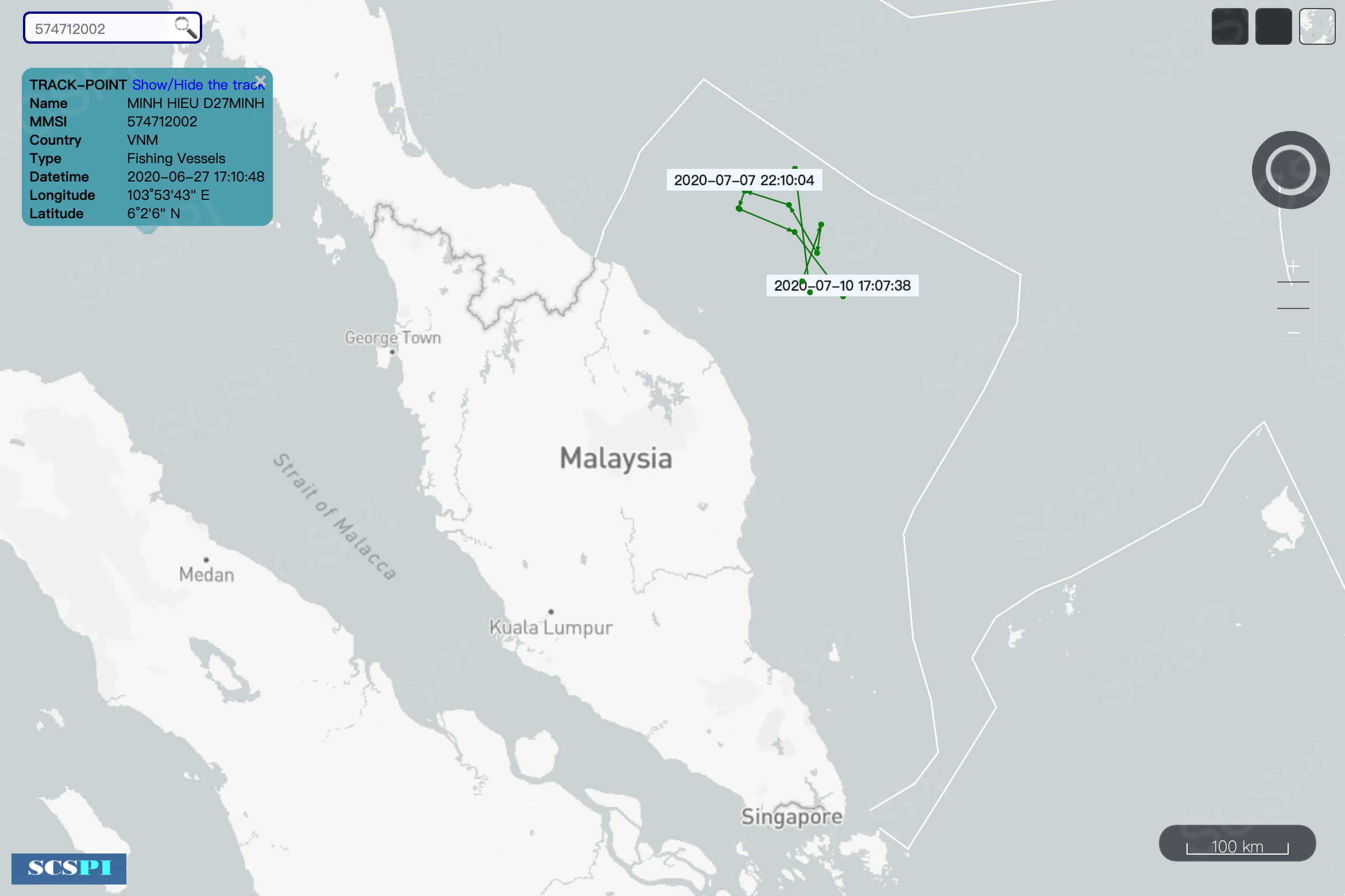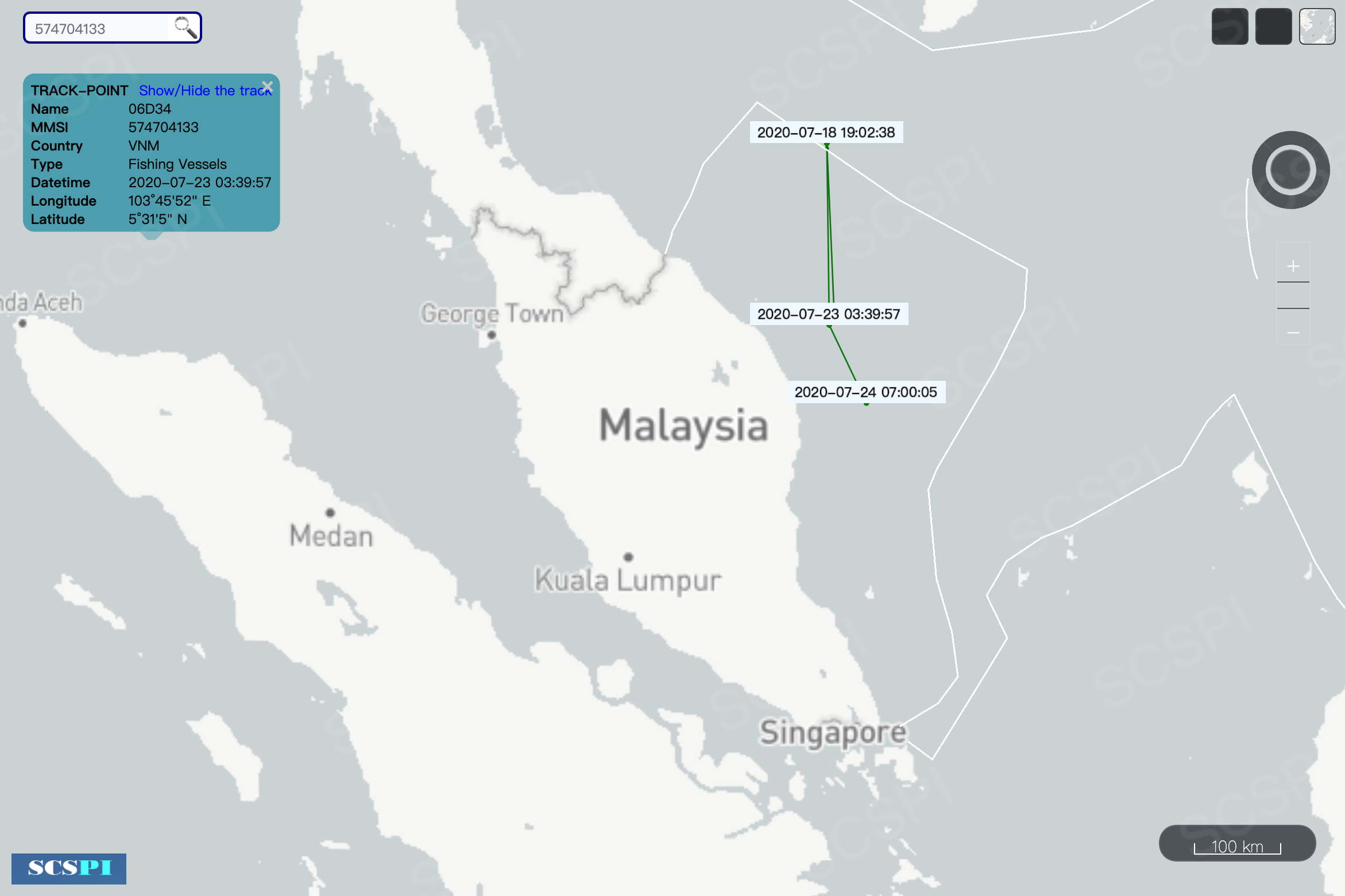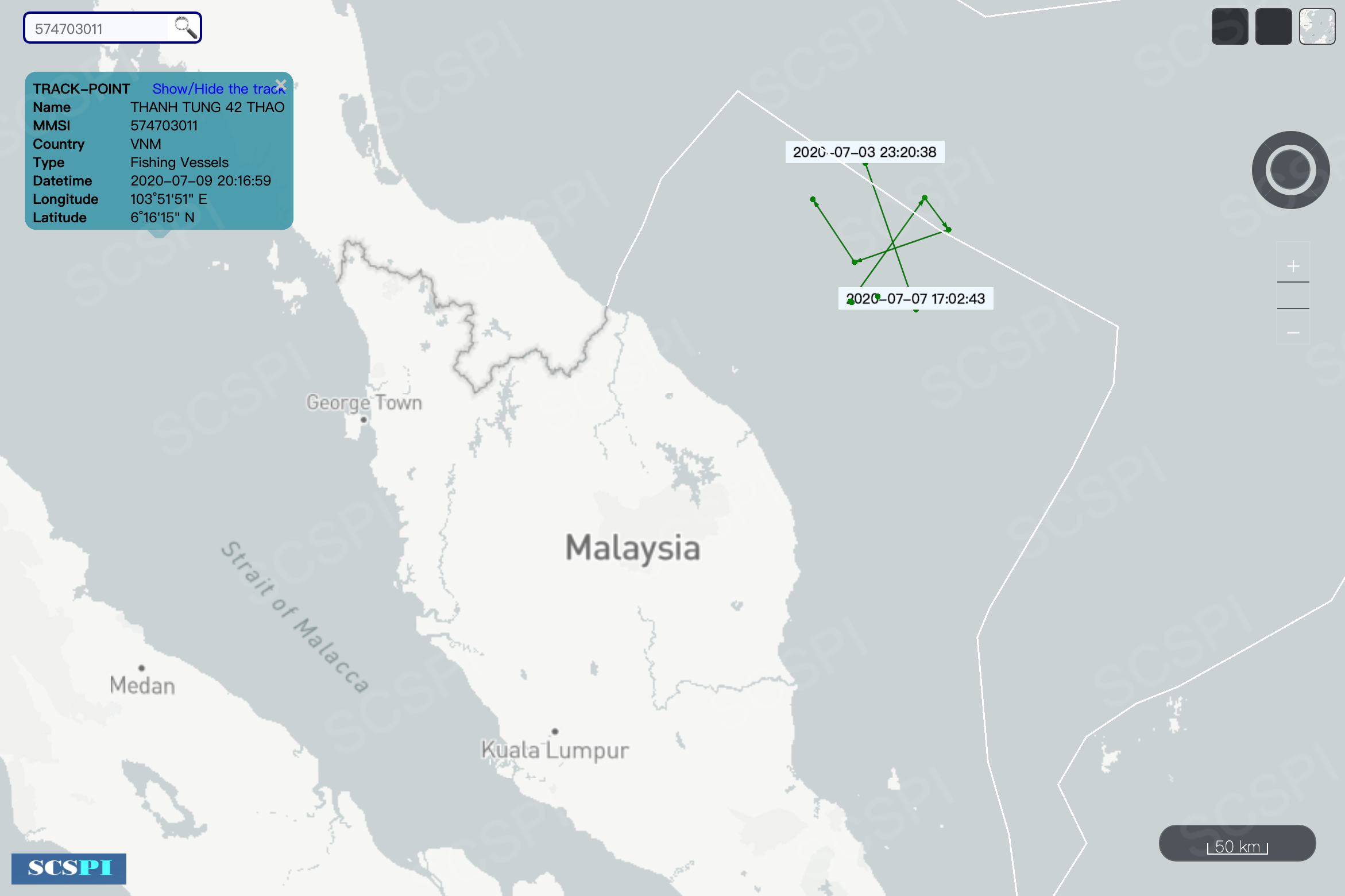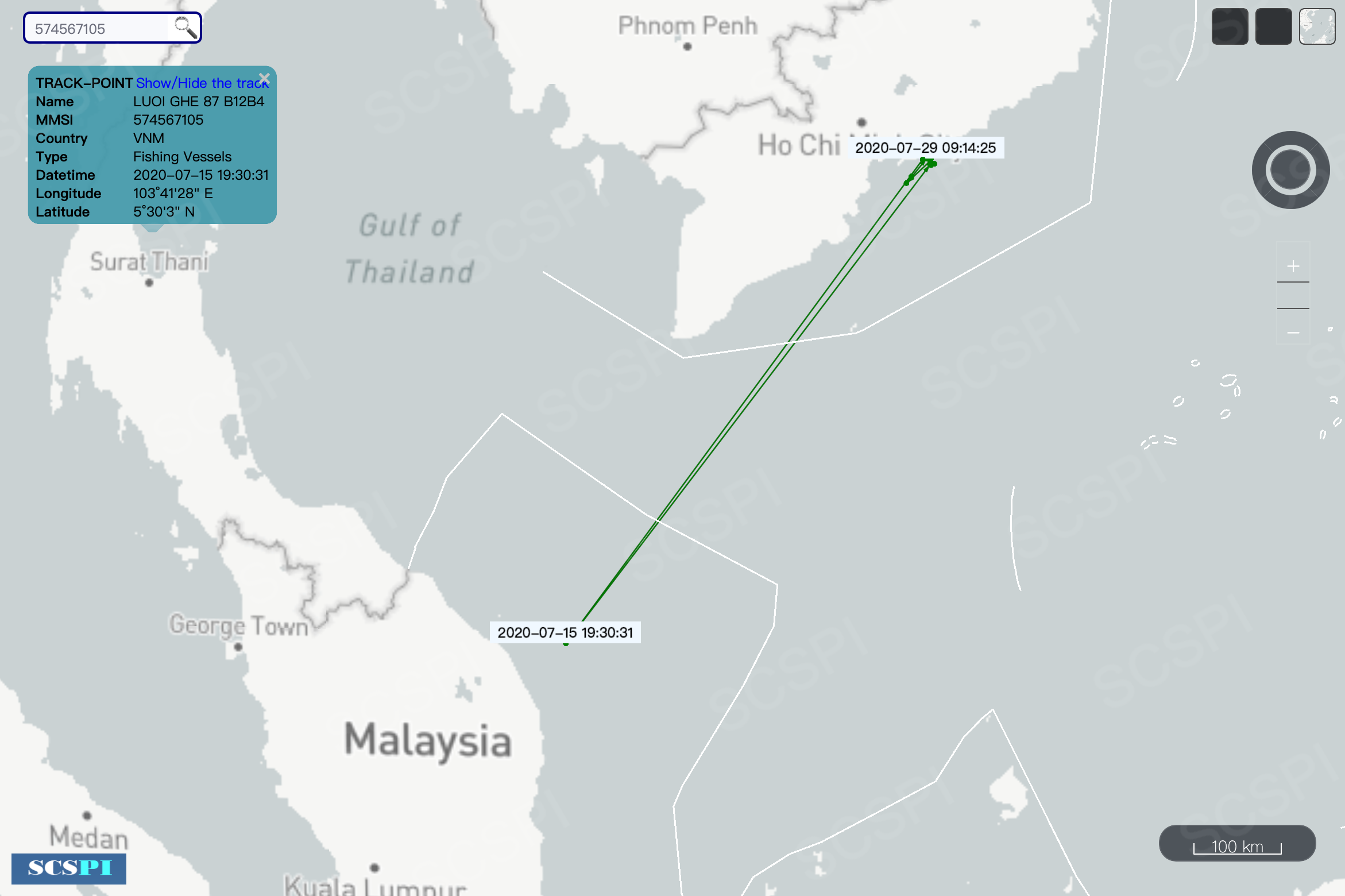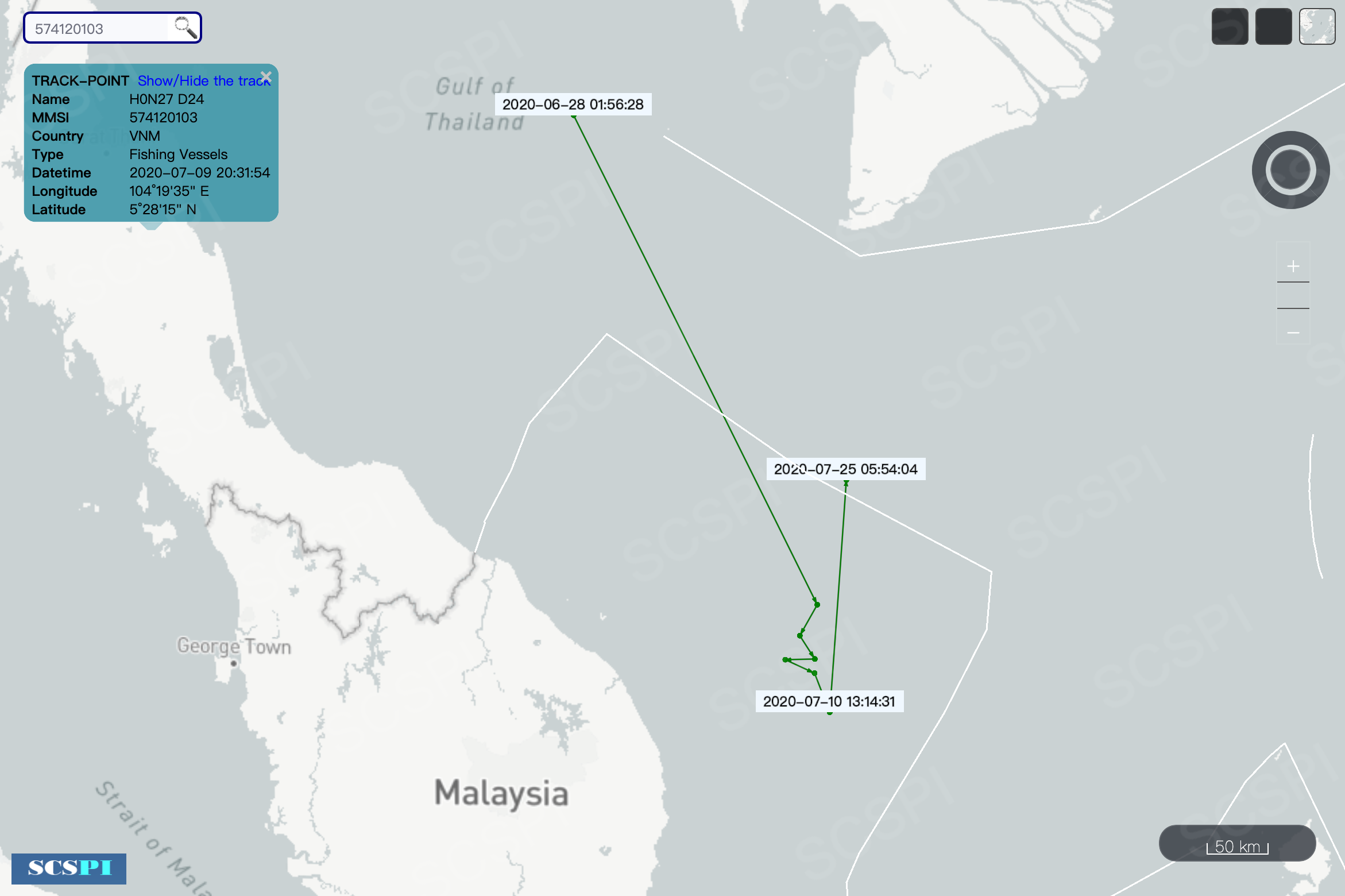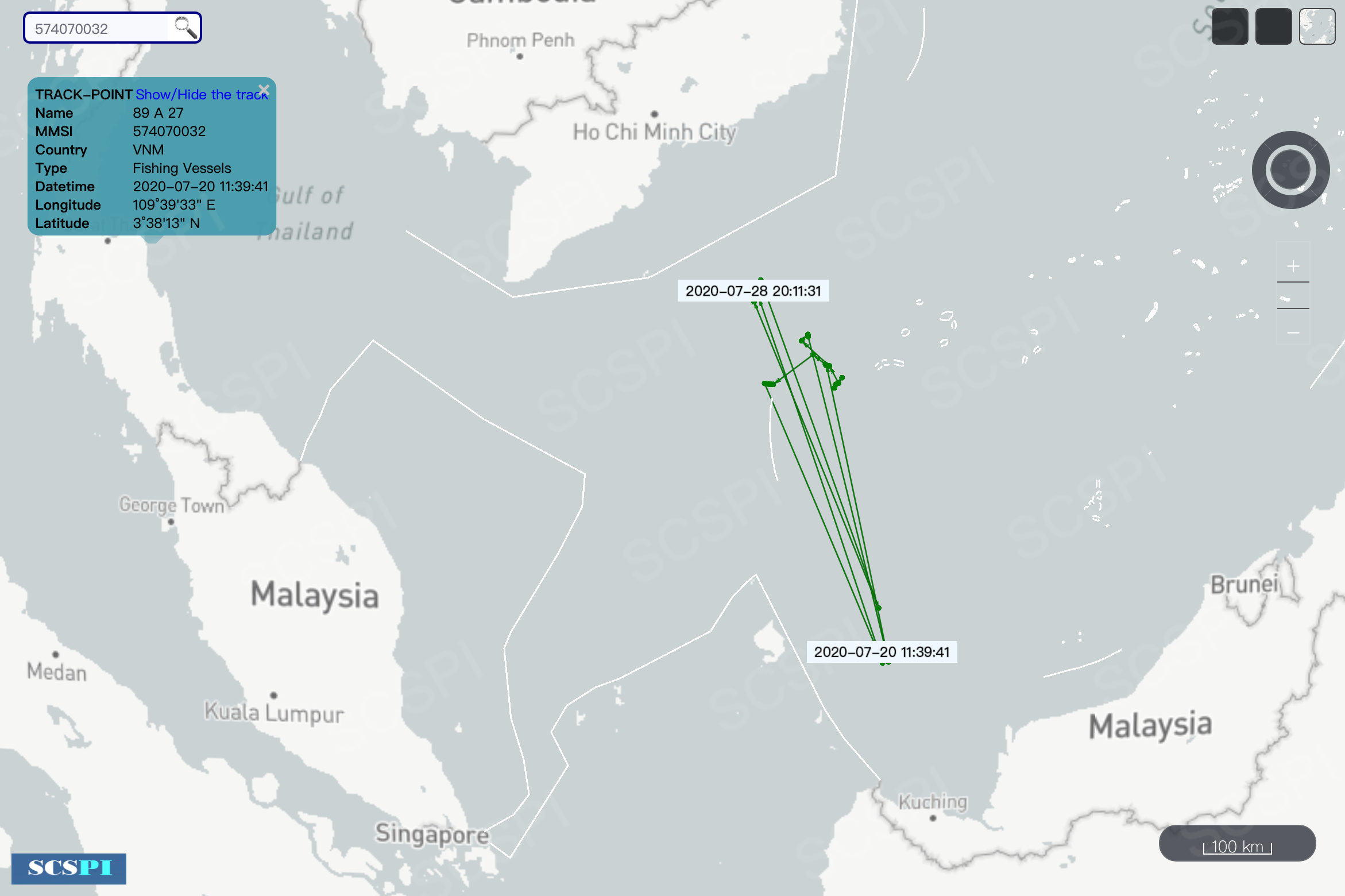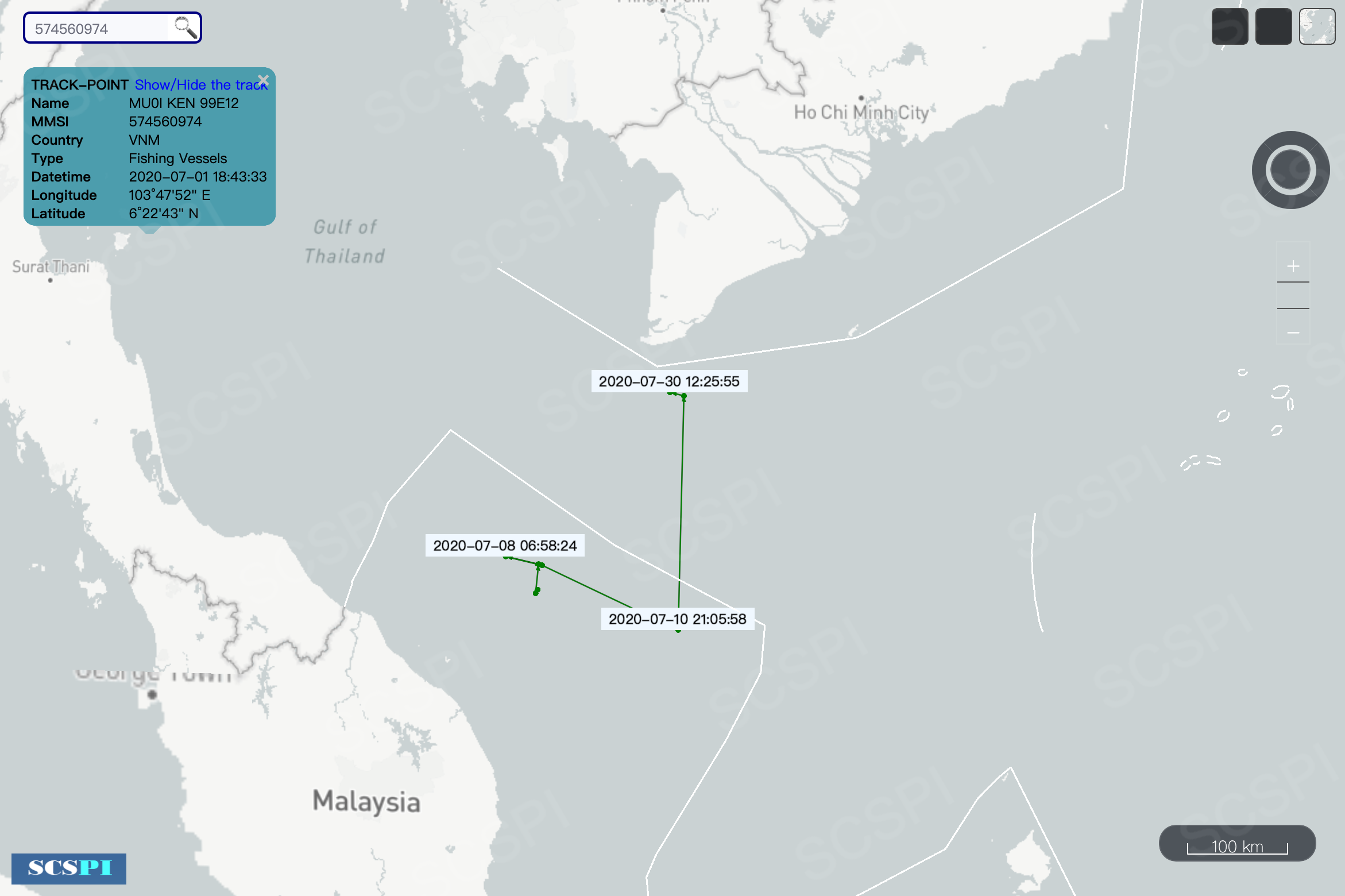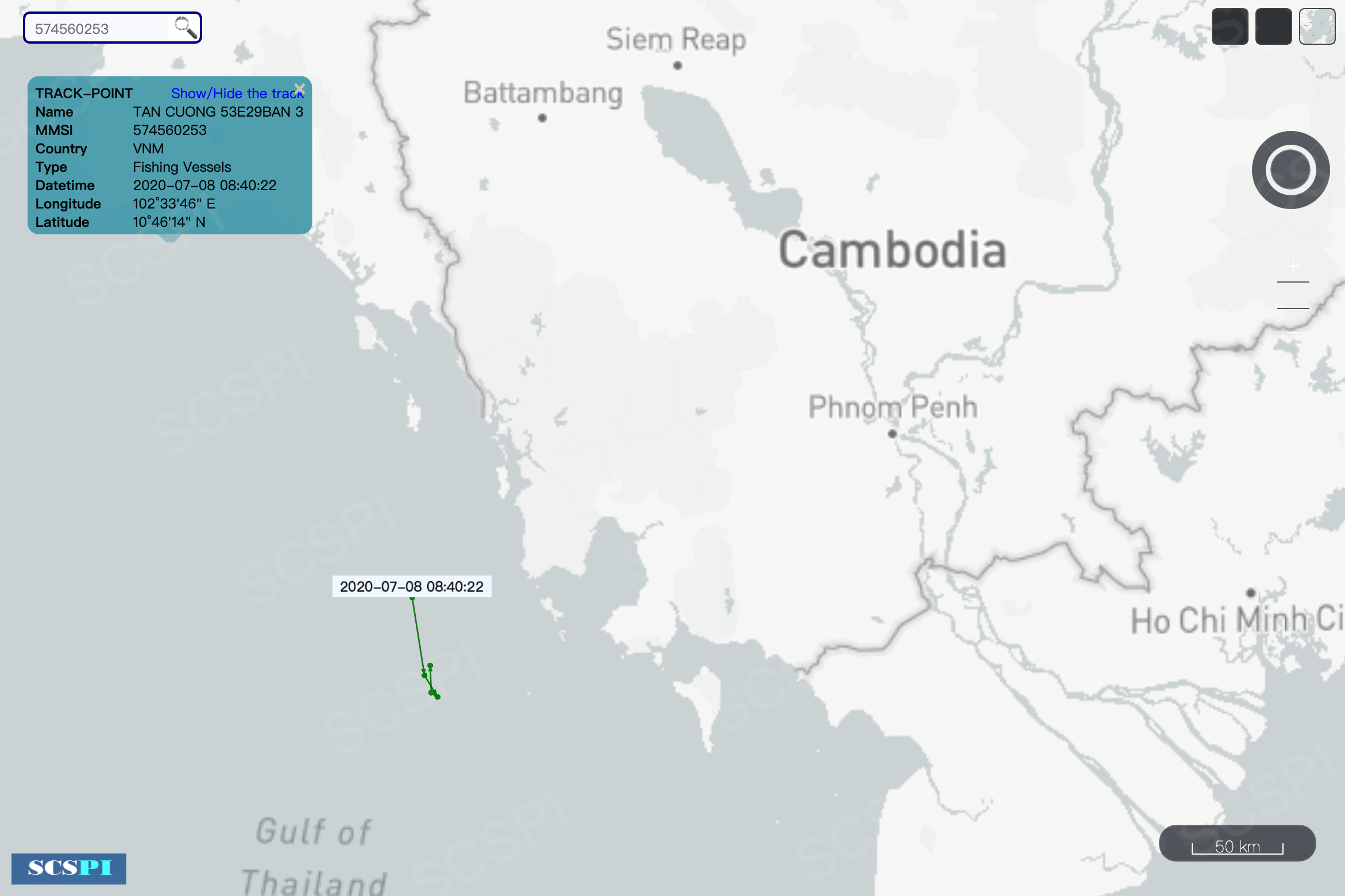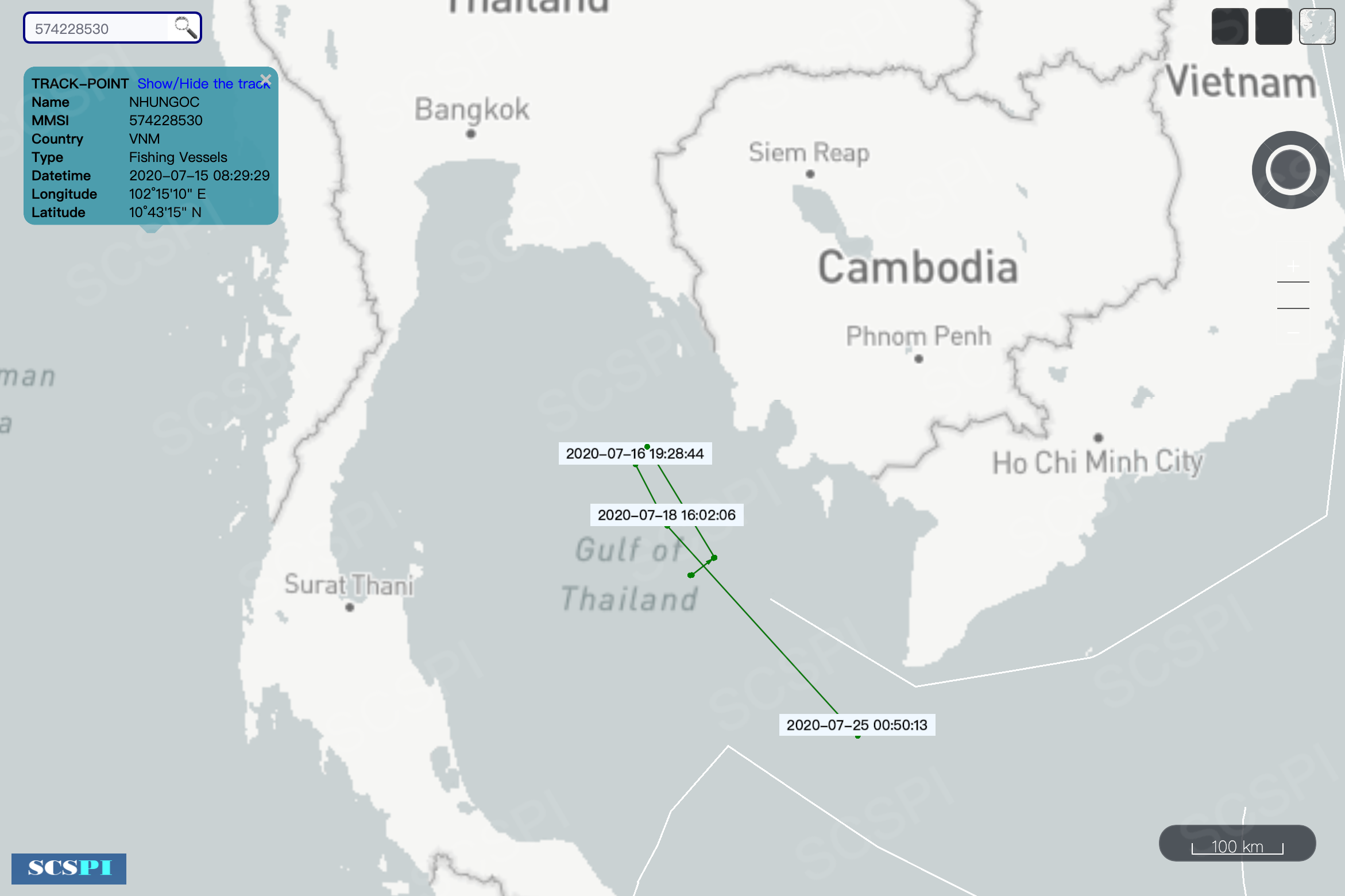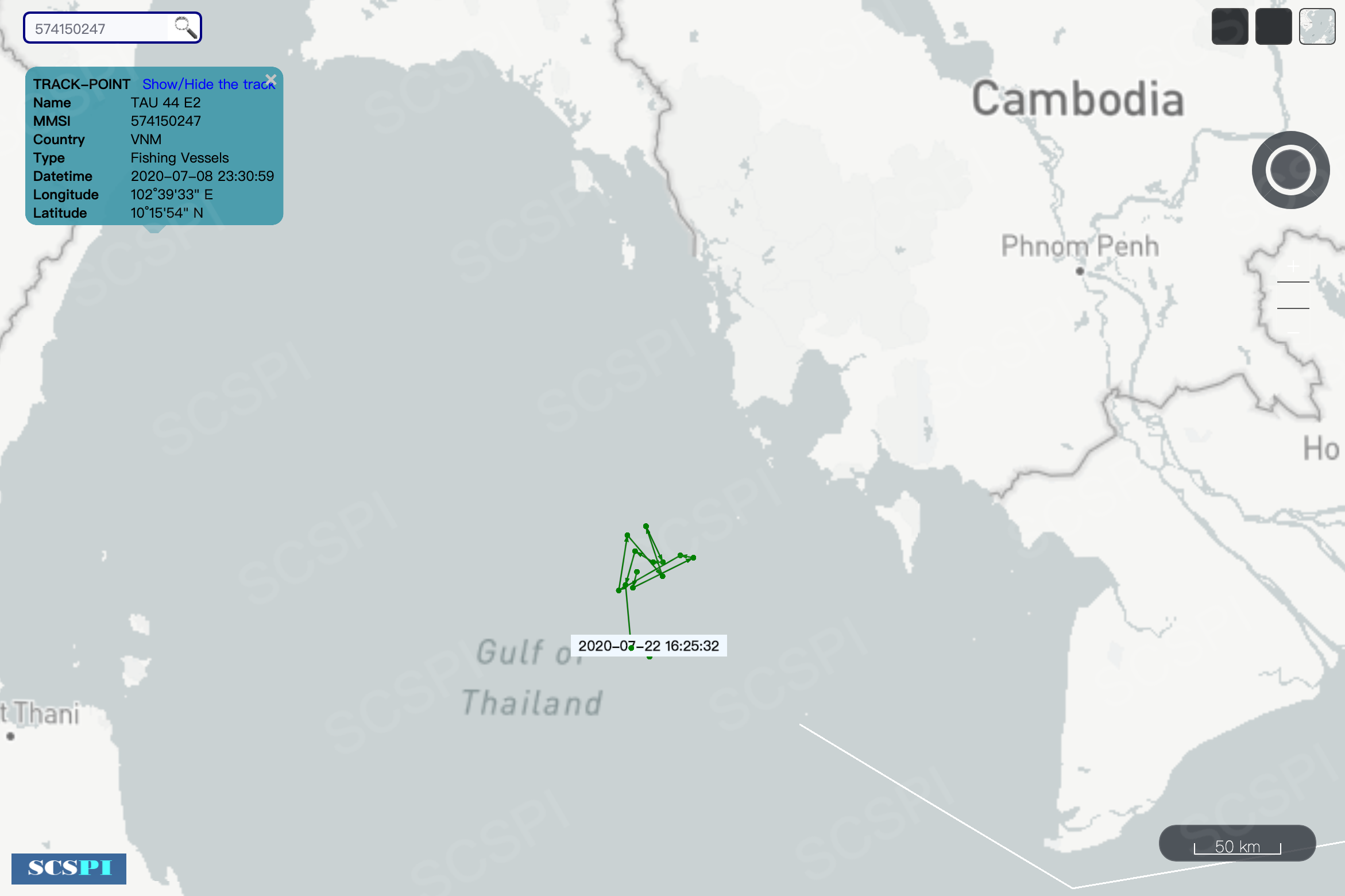In July, a total of 136,198 tracking points of 9,766 Vietnamese fishing vessels were recorded by the AIS, basically static with those in June.
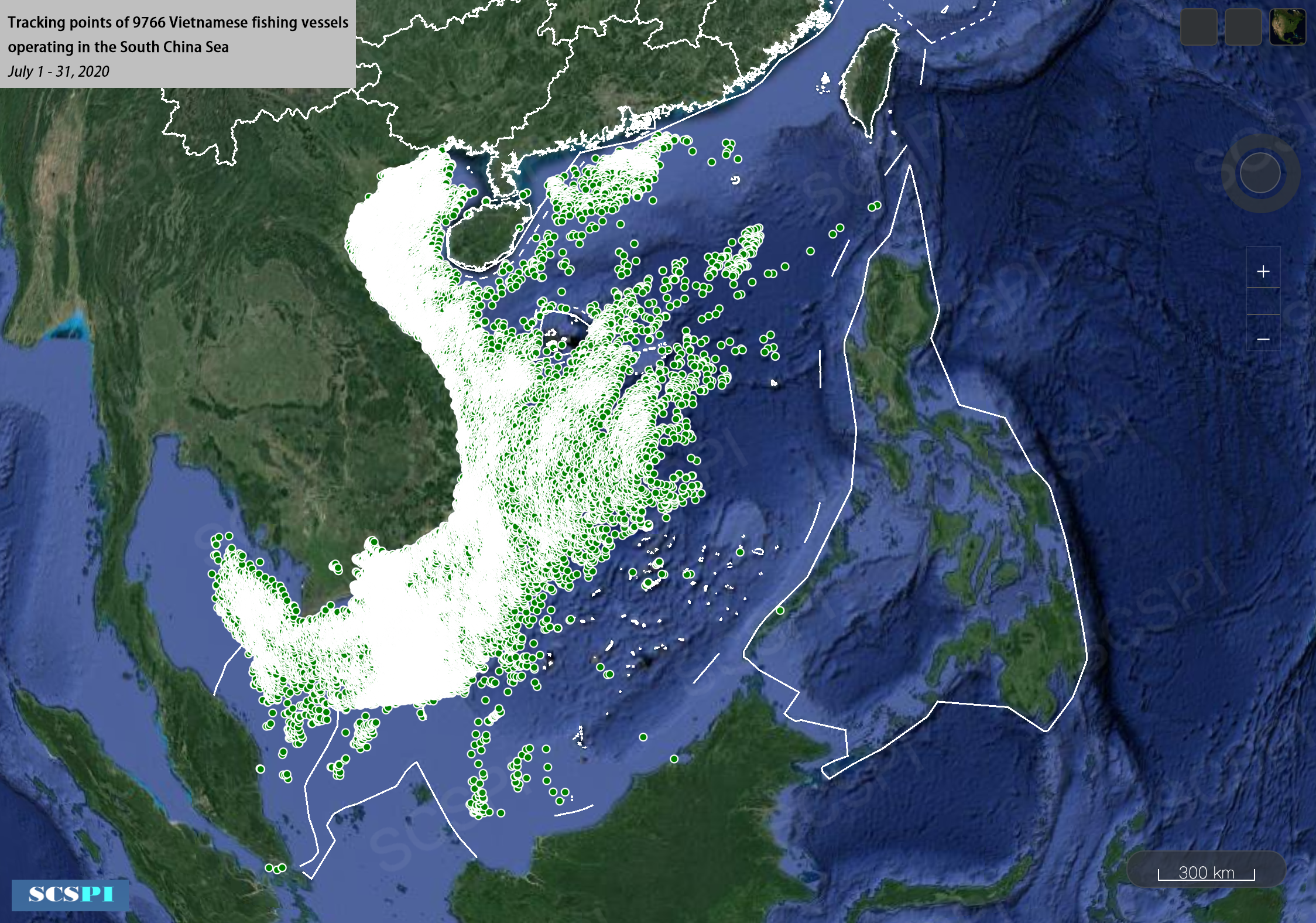
The number of Vietnamese fishing vessels acting illegally in the waters of Malaysia, Indonesia and Cambodia edged down slightly, while those intruding into the waters of Chinese mainland and the Hainan Island remained high. The details are as follows:
Coastal Waters of Chinese Mainland and Hainan Island
According to the AIS statistics, in July, at least 702 Vietnamese fishing vessels intruded into the coastal waters of Chinese mainland and the Hainan Island (as illustrated in the figure below, the scope covers the waters of the Beibu Gulf, excluding China’s maritime domain within the common fishery zones; the territorial seas and internal waters of Guangdong Province and the Hainan Island; the southeastern waters of the Hainan Island, as well as the area within around 30 nm beyond the Guangdong Province’s territorial seas). Compared with 692 in June, there is a slight increase in July, hovering at a high level.
Among them, 91 intruded into China’s territorial seas and internal waters, which rebounded in June after declining to 24 in May.
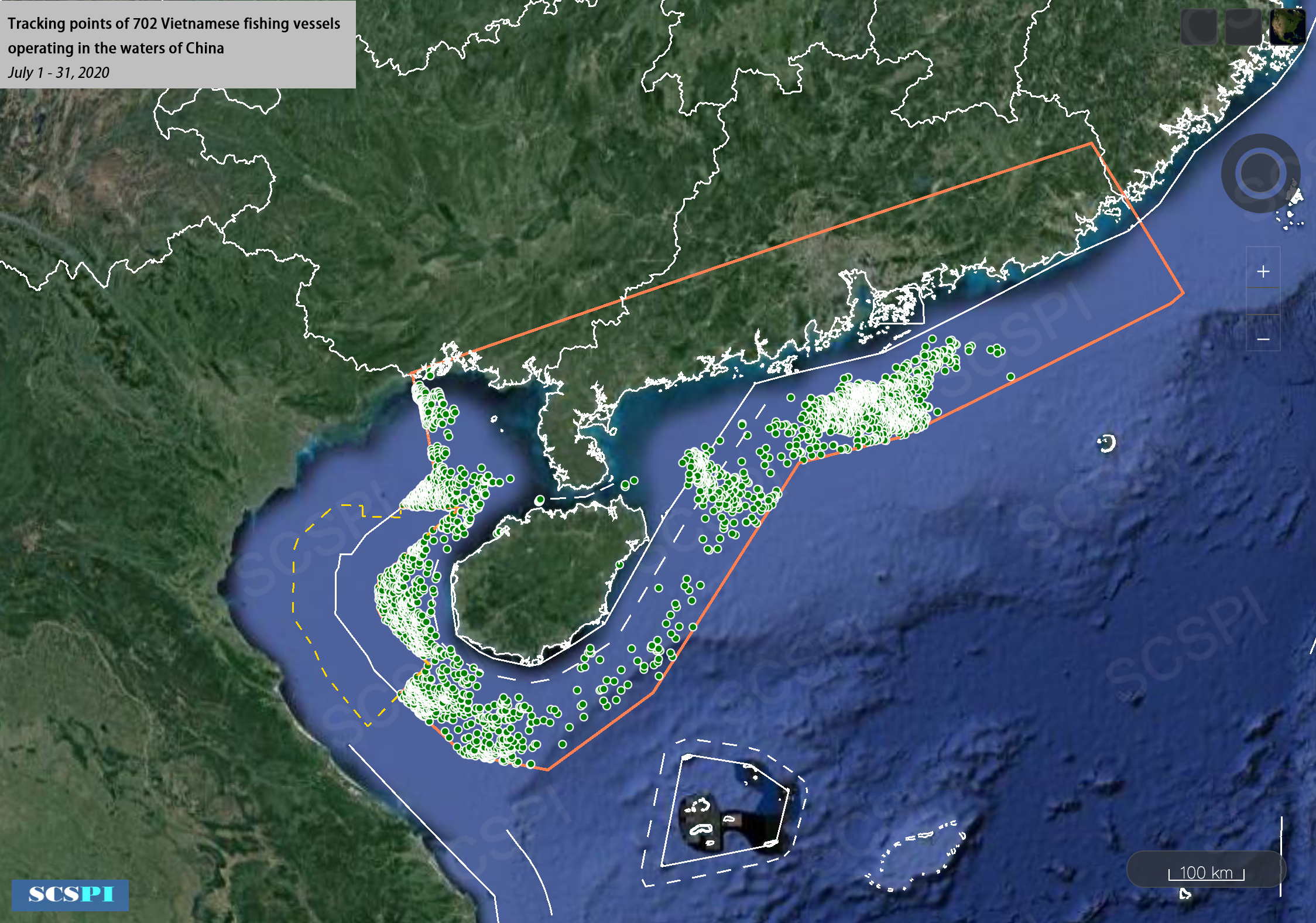
Download full AIS records of 702 Vietnamese fishing vessels here
As is pointed out in previous reports, Vietnamese fishing vessels were, for one thing, conducting illegal, unreported and unregulated (IUU) fishing, which is banned by international laws and certainly violates China’s sovereignty and jurisdiction. For another, some Vietnamese fishing vessels might come to China’s waters for special missions rather than fishing. Given that there was an abnormal gathering near Guangdong and Hainan, which are the important channels for PLA Navy and Air Force to reach the oceans, these Vietnamese fishing vessels were much likely to be maritime militia that conducted close-in reconnaissance.
China Coast Guard has taken tougher measures against these Vietnamese fishing vessels. According to some officers in Guangxi, a dozen of intruding Vietnamese fishing vessels had been detained by local law enforcement forces, and were undergoing judicial process in accordance with Chinese law.
By enforcing the summer fishing moratorium, China intends to preserve fishery resources and protect maritime environment. Yet this good will has been viciously exploited by the Vietnamese government. Without the competition and counterbalance of the Chinese fishing vessels, the Vietnamese fishing vessels only need to evade a limited number of China’s law enforcement ships, hence growing unscrupulously.
Boundary Waters of West Malaysia and Indonesia
A total of 234 Vietnamese fishing vessels were tracked to intrude into the boundary waters of West Malaysia and the Natuna Islands of Indonesia, most of which gathered near the territorial seas delimited by the Malaysian government, demonstrating a slight drop from 245 in June.
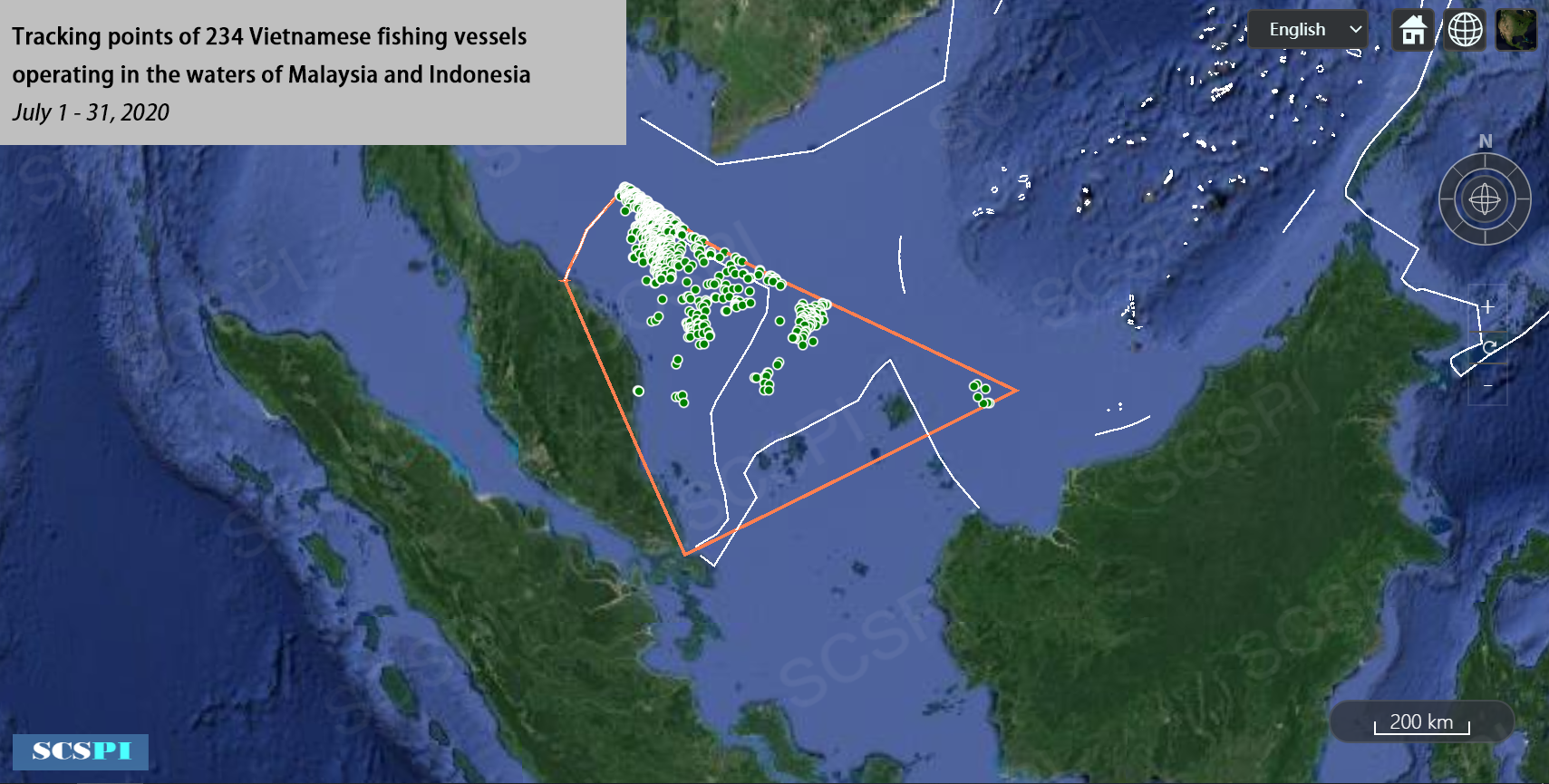
Download full AIS records of 234 Vietnamese fishing vessels here
Waters of Cambodia
In July, a total of 100 Vietnamese fishing boats intruded into the waters of Cambodia in the Gulf of Thailand, which was down by 30% from 157 in June.
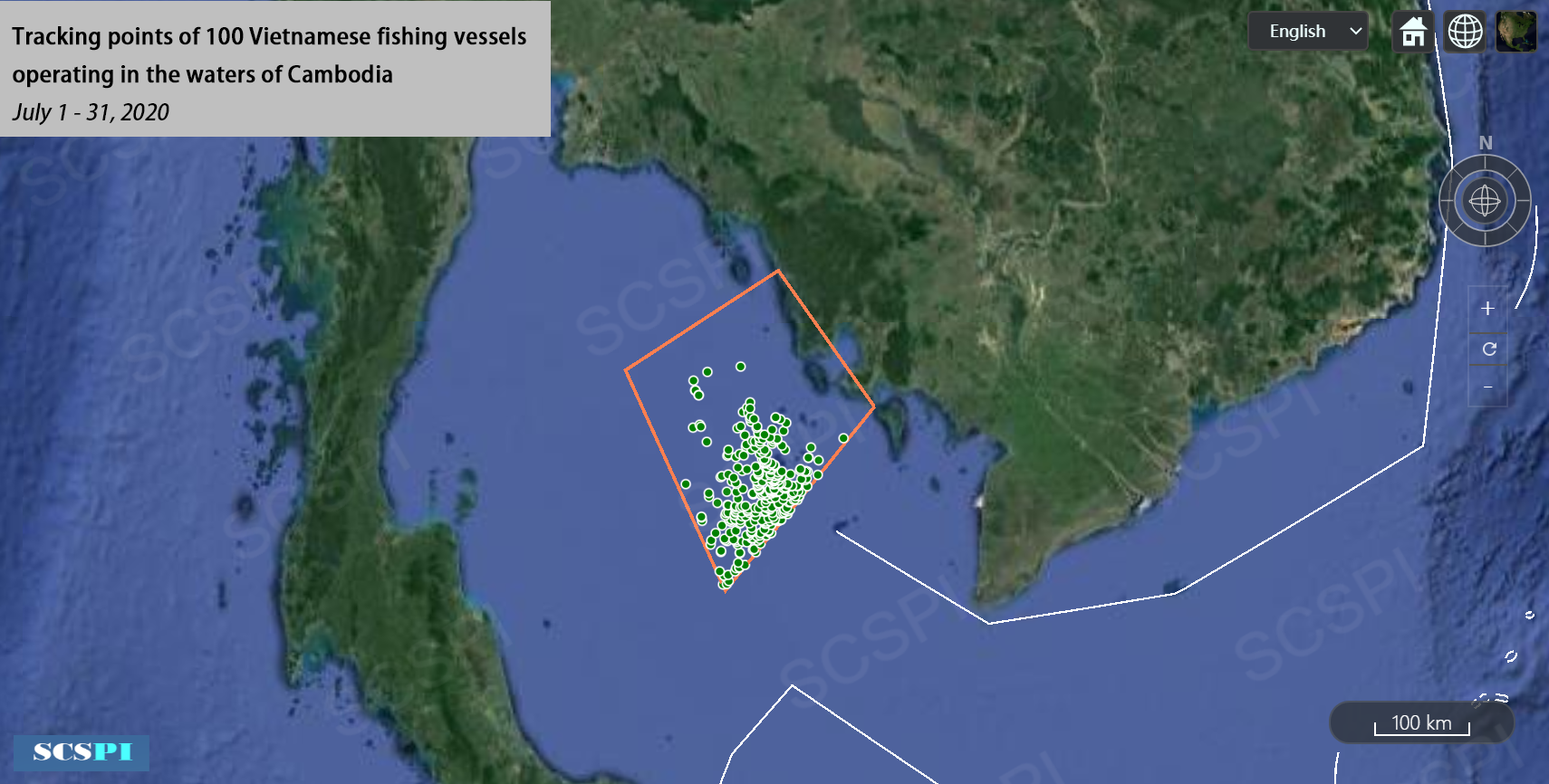
Download full AIS records of 100 Vietnamese fishing vessels here
Reflections and Prospects
After months of tracking and observation, it’s not difficult to find that Vietnamese IUU fishing vessels are adept at operating in the boundary waters and disputed waters, for example, the boundary waters between Malaysia and Indonesia, as well as Vietnam and Cambodia, and the overlapping waters of China and Indonesia. By doing so, they are, on the one hand, creating disputes, on the other, taking advantage of law enforcement loopholes in these areas.
Vietnam repeatedly declares to take measures against IUU fishing, but it acquiesces in or even pampers its fishing vessels in doing so. In this context, the illegal activities of Vietnamese fishing vessels in the South China Sea are unlikely to be curbed effectively.
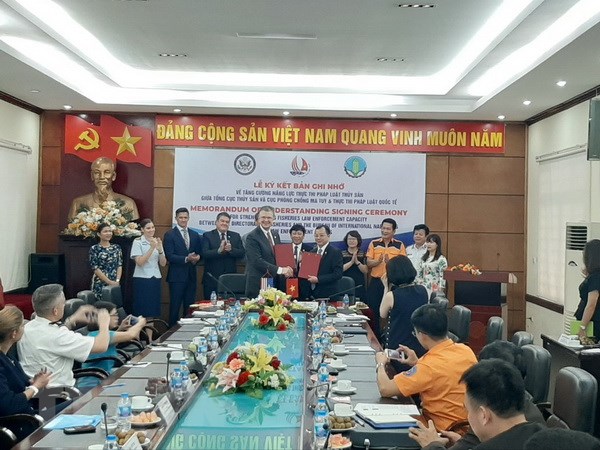
Photo: Vietnam News Agency
Notably, the US and Vietnam signed a memorandum of understanding (MoU) on July 22 in Hanoi on strengthening fishery law enforcement capacity. The US is expected to help Vietnam fight against IUU fishing as well as support Vietnamese fishermen against illegal threats at sea. The question is, the US has no law enforcement power in the South China Sea. Does Vietnam want to transfer its power? Or for other purposes?
No matter what the US and Vietnam are planning for, if they were for an early resolution of the IUU problem, the international community would like to see solid results from this cooperation that the intruding Vietnamese fishing vessels could take a favorable turn and finally be under control.
Appendix
Tracks of 20 typical cases of intruding Vietnamese fishing vessels in July, 2020
